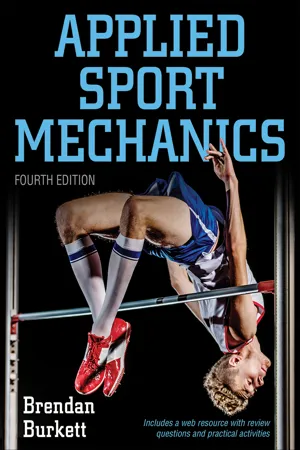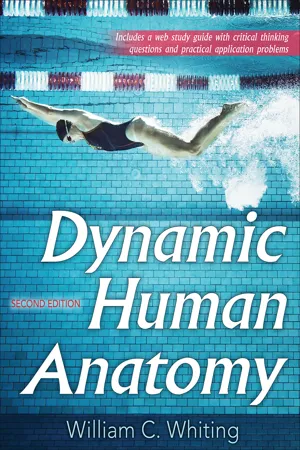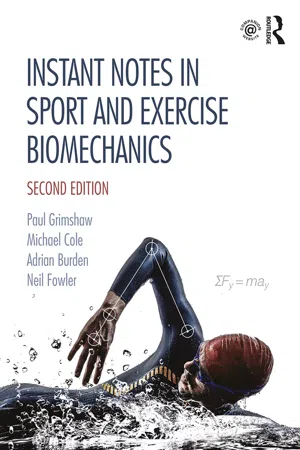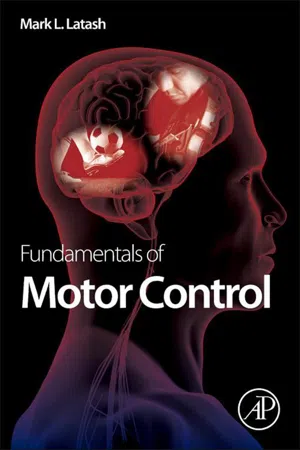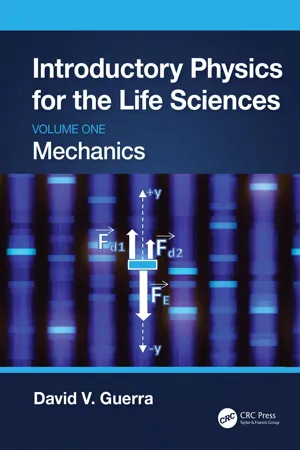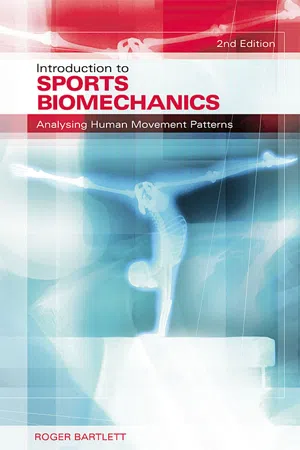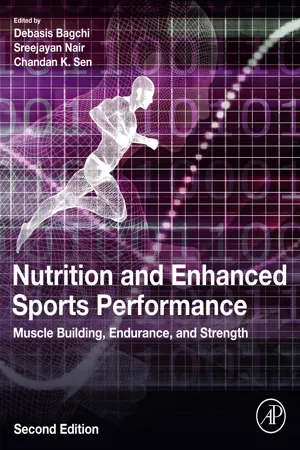Physics
Muscle Torque
Muscle torque refers to the rotational force generated by a muscle around a joint. It is a product of the muscle's force and the distance from the joint at which the force is applied. In physics, torque is a crucial concept for understanding the mechanics of human movement and the interaction between muscles and bones.
Written by Perlego with AI-assistance
Related key terms
Related key terms
1 of 4
Related key terms
1 of 3
9 Key excerpts on "Muscle Torque"
- eBook - ePub
- Brendan Burkett(Author)
- 2018(Publication Date)
- Human Kinetics(Publisher)
figure 2.6 . The principles followed by the athlete in applying torque to a bolt apply to all lever situations that occur in sport (Kageyama et al. 2014). In essence, what happens is a battle between the turning effect of two opposing torques—torque produced by an athlete’s muscular forces and torque produced by any type of resistance, such as the weight of the athlete’s limbs plus whatever the athlete is holding (e.g., a discus or a barbell). In a sport such as wrestling or judo, an opponent can also generate resistance and torque.Figure 2.6 An example of the relationship in a baseball bat, torque, and force. If the bat is swung at a constant velocity and the ball makes contact with the bat at point 1, the force on the ball would be, say, 50 units. But if the ball makes contact with the bat at point 2, which is twice the distance of r1 , the force on the ball is double, or 100 units.Adapted from S.J. Hall, Basic Biomechanics, 4th ed. (Boston: McGraw-Hill, 2003), 370.At a Glance Human Anatomy–Mechanics Connection- For humans, bones rotate at the joints, so an athlete’s muscles, bones, and joints work together and work like a mechanical lever system
- All human movement is a consequence of force and resistance battling each other.
- In an athlete’s body, force is primarily produced by muscular contraction. The weight of the athlete’s limbs plus the weight of whatever the athlete is trying to move creates resistance.
- Because the human bones rotate at the joints they always produce a turning effect, called torque.
Lever Systems
From this understanding of the term torque , we can then explore how various torque scenarios can exist within the human body. This mechanism is best described as a human lever system. Using the familiar bicycle pedal as an example, the mechanical principle for rotation requires an axis of rotation - eBook - ePub
- William C. Whiting(Author)
- 2018(Publication Date)
- Human Kinetics(Publisher)
Whiting and R.F. Zernicke, Biomechanics of musculoskeletal injury, 2nd ed. (Champaign, IL: Human Kinetics, 2008), 61. The magnitude of a torque is equal to the applied force (F) multiplied by the perpendicular distance (d) from the axis of rotation to the line of force action. This perpendicular distance is known as the moment arm, torque arm, or lever arm (figure 5.15). Biomechanical examples of torque include the biceps creating a flexion moment about the elbow, the moment created by a weight on the lower leg during a knee extension exercise, and the torque applied to the tibia in a skiing fall (figure 5.16). The standard unit of torque or moment comes from the product of the two terms: force in newtons (N) multiplied by moment arm in meters (m). The resulting unit is a newton-meter (Nm), or foot-pound (ft-lb) in the British system. Closer examination of the moment equation (moment = force × moment arm) reveals several important general principles when applying moment concepts to movement biomechanics. First, there is an obvious interaction between the force and the moment arm that directly affects the magnitude of the applied moment. To increase the moment, we have the option of increasing the force, increasing the moment arm, or both. To decrease the moment, we can decrease either the force or moment arm, or both. A second moment-related concept, while simple in statement, is powerful in its application. That is, when a force is applied through the axis of rotation, or parallel to the axis, no moment (torque) is produced. This concept follows directly from the moment equation. If the force passes through the axis, the moment arm is zero. Hence, no moment is produced. This can be seen by pushing on the hinges of a door - eBook - ePub
Biomechanics and Motor Control
Defining Central Concepts
- Mark L. Latash, Vladimir Zatsiorsky(Authors)
- 2015(Publication Date)
- Academic Press(Publisher)
Part One Biomechanical ConceptsOutline1 Joint Torque 2 Stiffness and Stiffness-like Measures 3 Velocity-Dependent Resistance 4 Mechanical Work and EnergyPassage contains an image
1Joint Torque
Abstract
Concept of joint torques —or joint moments as many prefer to call them—is one of the fundamental concepts in the biomechanics of human motion and motor control. In classical mechanics however the concept of joint torques (moments) is not defined and is not used. In this chapter the concept is defined and discussed in detail.Keywords
Dynamics; Interactive forces; Joint torques; Moment of force/couple; Movements in 3-D space; Planar movements; Statics; VectorConcept of joint torques —or joint moments as many prefer to call them—is one of the fundamental concepts in the biomechanics of human motion and motor control. A computer search in Google Scholar for the expression joint torques yielded 194,000 research papers. Even if we discard the returns that are due to the possible “search noise,” the number of publications in which the above concepts were used or mentioned is huge. The authors themselves were surprised with these enormous figures.Such popularity should suggest that the term is well and uniformly understood and its use does not involve any ambiguity. It is not the case, however. In classical mechanics the concept of joint torques (moments) is not defined and is not used. Peruse university textbooks on mechanics. You will not find these terms there. One of the authors vividly remembers a conference on mechanics attended mainly by the university professors of mechanics where a biomechanist presented his data. He was soon interrupted with a question: “Colleague, you are using the term ‘joint moment’ which is unknown to us. Please explain what exactly you have in mind.”1.1. Elements of history
An idea that muscles generate moments of force at joints was understood already by G. Borelli (1681) . Joints were represented as levers with a fulcrum at the joint center and two forces, a muscle force and external force acting on a limb, respectively. The concept of levers in the analysis of muscle action was also used by W. and E. Weber (1836) - eBook - ePub
Instant Notes in Sport and Exercise Biomechanics
Second Edition
- Paul Grimshaw, Michael Cole, Adrian Burden, Neil Fowler(Authors)
- 2019(Publication Date)
- Garland Science(Publisher)
Within the body, muscles can often operate at different mechanical advantages (due to where they connect in the body) and there are applications when the muscle is required to operate at an advantage and also at a disadvantage. For example, the bicep muscle in the upper arm which causes a flexion rotation about the elbow joint will function throughout the movement creating both maximum and minimum amounts of torque, i.e. the moment that may cause rotation (flexion). This mechanical advantage and disadvantage can be seen in more detail by considering the action of raising and lowering a weight in the hand (arm curling). When the perpendicular distance of the muscle line of pull from the joint axis (elbow joint) of rotation is larger the more torque (at the elbow joint) will be created for a given effort. When the perpendicular distance to the muscle line of pull is less, the torque that is created (as in the case of an extended arm position) is much smaller. The moment arm of the biceps’ force at different points in the movement of flexing the arm will change. This will create more or less torque at the elbow for a given effort. This principle of torque generation and mechanical advantage through levers is applied in the design of many modern exercise machines. For example, many devices will be able to accommodate the different torque-generating capacities of a muscle during exercise. The machines will often change the loading patterns at various points in the exercise in order to accommodate to the changing torques. Similarly, machines will often load muscles more at the points of their greatest torque-generating capacity.Key notes The study of levers A more detailed definition and application of levers can be explained through the study of moments and the second condition of equilibrium. This section provides an applied approach that is useful for explanation in non-technical terms (i.e. possibly for coaches, clinicians, athletes and even students). Levers Levers can be defined as rigid bars that rotate about axes or fulcrums. Generally, a force is applied to a lever in order to move or overcome a resistance. In the human body the bone or limb segment would be the rigid bar and the joint would be the fulcrum or point of rotation. The muscles would provide the force (effort) and the resistance (i.e. external force provided by gravity, contact or collision) would be the load. - eBook - ePub
- Mark L. Latash(Author)
- 2012(Publication Date)
- Academic Press(Publisher)
Since muscles have elastic properties, motion of a joint, even a very slow motion, is accompanied by changes in the length of the bi-articular muscle, which will produce torque at the other joint it spans. If no adjustments are made at the other joint, it will also move. Even in the absence of bi-articular muscles, motion of a joint within a multi-joint chain leads to torques in other joints, the so-called interaction torques (within a simple model, these are the sum of the contributions from inertial, centripetal, and Coriolis forces described earlier) (see Equation 5.3). Figure 5.17 Bi-articular muscles provide coupling across adjacent joints. As a result, motion of one joint leads to a change in the torque applied to the other joint. Consider a person sitting with the upper arm resting on a table with forearm and hand vertical (Figure 5.18). If this person tries to move the elbow joint without changing the wrist joint angle, muscles spanning the wrist joint will have to be activated in synchrony with and in proportion to activation of muscles that produce the elbow movement. Otherwise, the hand will flap under the action of interaction torques. A fast movement in the wrist is also accompanied with interaction torques acting at the elbow (these are typically smaller than in the previous example because of typical differences in the characteristics of motion in the two joints). So, a fast wrist motion has to be accompanied by appropriately timed and scaled activation of muscles controlling the elbow if one wants to keep the elbow joint motionless. Figure 5.18 When a sitting person placed the upper arm on a table and tries to move one joint at a time, the elbow (α) or the wrist joint (β), the mechanical joint coupling requires simultaneous changes in the joint torques (T α and T β). Reproduced by permission from Latash, M. L., Aruin, A. S., & Shapiro, B. (1995) - eBook - ePub
- D. Gordon E. Robertson, Graham E. Caldwell, Joseph Hamill, Gary Kamen, Saunders Whittlesey(Authors)
- 2013(Publication Date)
- Human Kinetics(Publisher)
Multiple muscles and ligaments cross each joint, so it is difficult to know which internal tissues contribute to the measured joint torque at any given time, position, or velocity. The measured torque is the sum total from all contributions, and important concepts like synergistic and antagonist cocontraction cannot be addressed from these measurements alone. Interpretation of the Tθ relationship is therefore complicated because it is influenced by a combination of the muscle FL characteristics, moment arm–angle patterns, and relative activation level for each contributing muscle. Thus, although the optimal angle for isometric torque production at a joint can be measured, the optimal length for force production (L o) for specific human muscles is generally unknown. Similarly, the Tω relations for many joints are routinely measured, but these are influenced by a combination of the FV, moment arm, and activation characteristics for each contributing muscle. The FV relationships for individual muscles therefore cannot be attained directly from such joint measurements. Considering that contributing muscles to a given joint torque usually have unique fiber type composition and skeletal attachment points, they are likely to be at different contractile velocities and at different places on their FV relations at any measured Tω data point. Finally, this isolated joint approach assumes that each joint has independent torque generation properties and thus ignores the action of biarticular muscles that couple the torque capabilities at adjacent joints. Individual Muscle Parameters With these difficulties, how can specific individual human muscle parameters be found? Because of the limitations in the rotational joint measurement approach, methods for determining the mechanical properties and parameters of single human muscles have been investigated. Because these efforts cannot rely on direct force and length measurements, they all can be classified as modeling procedures - David V. Guerra(Author)
- 2023(Publication Date)
- CRC Press(Publisher)
3 Torque and Rotational Equilibrium
DOI: 10.1201/9781003308065-33.1 Introduction
In some situations, a force is applied using a tool like a wrench or a screwdriver and a twisting force, called a torque, is produced. These twisting forces are central to the understanding and analysis of some objects in equilibrium. In this chapter, the concepts of torque will be studied and then applied to the analysis of systems in rotational equilibrium.- Chapter question: A person suspends a block of mass m from his or her hand, as depicted in Figure 3.1 .
FIGURE 3.1 Diagram of an arm.Assuming their forearm has a mass mA , is the force of tension in their bicep muscle equal to, greater than, or less than the sum of the weight of their arm and the weight of the object? To answer this question, the concepts of torque and rotational equilibrium will be developed and they will be applied at the end of this chapter to answer this question.
3.2 Torque
Torque is a twisting force, which is denoted by the Greek letter tau (τ). When opening the lid of a jar, the more force you apply the more twisting force (torque) you apply to open the jar. As you may also know from experience, if you are trying to loosen or tighten a bolt with a wrench, the harder you pull on the wrench, the force (F), the more torque there is on the bolt. But sometimes the bolt will not loosen no matter how hard you pull on the wrench. To loosen the bolt you can get a longer wrench or even slip a pipe on the end of the wrench. So, it is clear that the torque depends not only on the force applied but also on the distance away from the rotation point at which the force is applied.In the previous example, the angle between the force and the distance away from the rotation point is assumed to be perpendicular as shown in Figure 3.2 , but that is not always the case. So, the torque (τ) is defined as the product of the applied force (F) and the perpendicular distance (r ⊥- eBook - ePub
Introduction to Sports Biomechanics
Analysing Human Movement Patterns
- Roger Bartlett(Author)
- 2007(Publication Date)
- Routledge(Publisher)
2 . The first term, owing to the motion of the body’s centre of mass about the system’s centre of mass, is known as the ‘remote’ angular momentum. The latter, owing to the rigid body’s rotation about its own centre of mass, is the ‘local’ angular momentum. For an interconnected system of rigid body segments, representing the sports performer, the total angular momentum is the sum of the angular momentums of each of the segments calculated as in the above equation. The ways in which angular momentum is transferred between body segments can then be studied for sports activities such as airborne manoeuvres in gymnastics or the flight phase of the long jump.GENERATION AND CONTROL OF ANGULAR MOMENTUM
A net external torque is needed to alter the angular momentum of a sports performer. Traditionally in sports biomechanics, three mechanisms of inducing rotation, or generating angular momentum, have been identified, although they are, in fact, related.Force couple
A force couple consists of a parallel force system of two equal and opposite forces (F ) which are a certain distance apart (Figure 5.16(a) ). The net translational effect of these two forces is zero and they cause only rotation. The net torque of the force couple is: M = 2r × F . The × sign in this equation tells us that the position vector, r , and the force vector, v , are multiplied vectorially (see Appendix 4.2 ). The resulting torque vector has a direction perpendicular to, and into, the plane of this page. Its magnitude (2 r F ) is the magnitude of one of the forces (F ) multiplied by the perpendicular distance between them (2r ).The torque can be represented as in Figure 5.16(b) and has the same effect about a particular axis of rotation wherever it is applied along the body. In the absence of anFigure 5.16 Generation of rotation: (a) force couple; (b) the torque (or moment) of the couple.external axis of rotation, the body will rotate about an axis through its centre of mass. The swimmer in Figure 5.2(a) is acted upon by a force couple of her weight and the equal, but opposite, buoyancy force.Eccentric force
An eccentric force (‘eccentric’ means ‘off-centre’) is effectively any force, or resultant of a force system, that is not zero and that does not act through the centre of mass of an object. This constitutes the commonest way of generating rotational motion, as in Figure 5.17(a) - eBook - ePub
Nutrition and Enhanced Sports Performance
Muscle Building, Endurance, and Strength
- Debasis Bagchi, Sreejayan Nair, Chandan K. Sen(Authors)
- 2018(Publication Date)
- Academic Press(Publisher)
Muscular strength is essential for both the general and athletic populations. Valid, reliable, and applicable strength assessments can be used to identify physical weakness, evaluate training programs, assess muscle-bone strength, monitor athletic performance, and guide postinjury rehabilitation. This chapter describes the neuromuscular and biomechanics factors that may affect strength assessment outcomes. Muscle activation, maximum isometric muscle force, and muscle force–length–velocity relationship, which determine the force production of a muscle, are defined. Biomechanics of single-joint and multijoint strength tests are discussed with a focus on understanding internal and external forces as well as torques and how changes in movement range of motion, body positions, and load placements may affect the joint contributions to strength outcomes. Modality of movement and posture are introduced in relation with the importance of task specificity in strength training and assessments. In addition, common guidelines and recent literature regarding the effect of warm-up, postactivation potentiation, and fatigue on strength assessments are described. Finally, traditional and convenient strength assessments with extra equipment are compared and illustrated. Practitioners and researchers should be aware of and control these factors to ensure the reliability, validity, and comparability of strength assessments. Dynamic strength assessments that require less time and impose decreased injury risk are encouraged, when appropriate.Keywords
Biomechanics; Force; Strength; TorquesIntroduction
Muscular strength is commonly assessed as the maximum force or torque a muscle or a group of muscles can produce against a resistance during specific tasks [1] . Force is a push or pull that tends to change the linear acceleration of an object. Torque or moment is the product of forces and moment arms and the cause of angular acceleration. Muscular strength is an important component for daily activities, pain management, fall prevention, and bone health in the general population [2 –4 ]. Muscular strength also plays a critical role in performance enhancement and injury prevention in athletes [5 ,6 ]. Strength assessments can be used to identify physical weakness, evaluate training programs, assess muscle-bone strength, monitor athletic performance, and guide postinjury rehabilitation [1] . To achieve these goals, strength assessments must be valid, reliable, and applicable. This chapter will describe the neuromuscular and biomechanics factors that may affect strength assessment outcomes.Force Production of a Muscle
The force a muscle produced can be modeled as [7] :Fm = Fmax ×[ a × fa× cos( l )× f( v )+ fp( l )]( Ø )Fm, muscle force; Fmax, maximum isometric muscle force; a, muscle activation; fa(l), muscle active force–length relationship; f(v), muscle force–velocity relationship; fp(l), muscle passive force–length relationship; Ø, muscle pennation angle.Activation
Muscle activation determines the proportion of motor units activated for force production. Muscle activation patterns are commonly quantified through muscle electromyography [7] . Studies have shown that strength gain induced by resistance training is accompanied by increased muscle electromyography, suggesting that neural activation contributes to increased strength [8 ,9 ]. To promote muscle activation during strength assessments, individuals are encouraged to perform strength tests with maximal effort, even when the resistance is submaximal. Neurological factors significantly contribute to strength gain, especially during the early phase of training [10]
Index pages curate the most relevant extracts from our library of academic textbooks. They’ve been created using an in-house natural language model (NLM), each adding context and meaning to key research topics.
Explore more topic indexes
Explore more topic indexes
1 of 6
Explore more topic indexes
1 of 4
